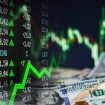Understanding Economic Indicators for Active Traders
As active traders, staying informed on the myriad of elements that influence the market is integral. One of the key aspects to be mindful of is economic indicators. These data points reveal key insights about an economy’s performance, often pushing markets one way or another. For investors and traders alike, understanding economic indicators is vital in anticipating market trends and making educated, timely investment decisions. Here’s an in-depth look at economic indicators and why they matter to active traders.
Introduction to Economic Indicators
Economic indicators are data points that provide insights into the macroeconomic conditions of a country, and by extension, global markets. They are often released by government agencies or non-profit organizations that specialize in analyzing economic trends. The figures represented by these indicators can influence the financial market in various ways, impacting everything from company stocks to the value of currencies.
There are myriads of economic indicators, but for the purpose of this examination, we will focus on the three core types:
-
Leading Indicators: These are predictive data points that tend to change before the economy adjusts. Examples include stock market returns and building permits. Understanding these can give traders a glimpse into the future direction of the economy.
-
Lagging Indicators: These indicators only change after the economy has begun to follow a certain pattern. They serve as a confirmation of a pattern, rather than a predictor. Examples include unemployment rates and corporate profits.
-
Coincident Indicators: These indicators change in tandem with the economy, and thus, they offer a real-time snapshot of the economic climate. Examples include industrial production and personal income of workers.
The Role of Economic Indicators in Trading
Active trading involves frequent buying and selling of securities for quick profits. To succeed, traders need a comprehensive understanding of market trends. Economic indicators provide precisely that.
Predicting Market Movements
As a trader, leading economic indicators are your best friend for predicting potential market movements. If, for instance, building permits (a leading indicator) are on the rise, it’s a good signal that the construction industry is poised to flourish, positively impacting related stocks.
Informed Decision Making
Knowing the current state of the economy—through coincident economic indicators—can help you make smarter decisions about what trades to make when. For example, if personal income rates are dipping, consumer spending might slow down, negatively impacting retail stocks.
Confirmation of Trends
Lagging indicators serve as a confirmation of trends and patterns. An increase in corporate profits (a lagging indicator) validates a positive trend in the market, giving more assurance about your future trades.
Making the Most of Economic Indicators
Understanding economic indicators is only one part of the equation. Applying this understanding productively is what differentiates successful traders from the rest. Do thorough research and tune into economic calendar events for real-time data on economic indicators.
However, it’s essential not to base all your decisions purely on economic indicators. They should be part of a broader market analyses strategy that includes technical and fundamental analyses.
In conclusion, for active traders looking to master the art of trading, understanding and utilizing economic indicators is not a luxury—it’s a necessity. The ability to predict market movements, make informed decisions, and confirm trends is a tremendous asset in the volatile world of trading. Leveraging these economic indicators, along with a comprehensive investment strategy, puts you one step ahead in the ever-fluctuating financial markets.










